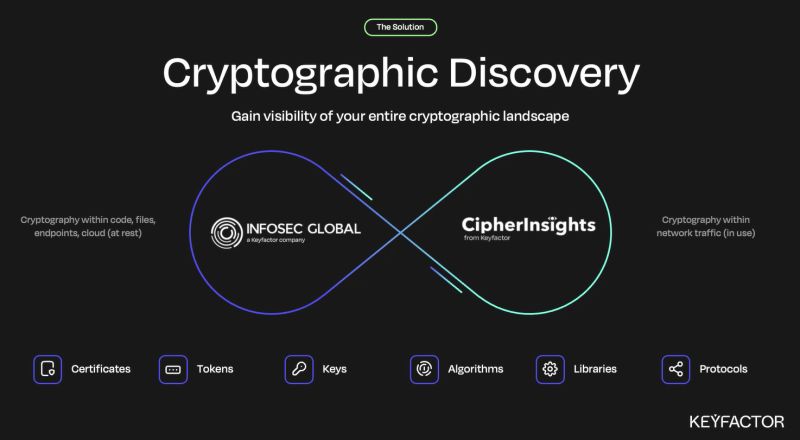
In today’s digital era, organizations rely heavily on encryption to secure sensitive data, protect user privacy, and maintain trust. However, as networks grow more complex and cyber threats become more advanced, many businesses struggle to understand where, how, and what type of cryptography is being used across their systems. This is where Cryptographic Discovery becomes essential.
Cryptographic Discovery refers to the process of identifying, mapping, and analyzing all cryptographic assets within an organization—including certificates, keys, algorithms, encryption protocols, and any cryptography-dependent systems. Without proper visibility, companies are left vulnerable to breaches, compliance failures, and costly operational risks.
This guide explains what Cryptographic Discovery is, how it works, and why it plays a critical role in modern cybersecurity.
What is Cryptographic Discovery?
Cryptographic Discovery is the systematic process of scanning and cataloging all cryptographic components within an organization’s IT environment. This includes:
- Encryption keys
- Digital certificates
- Algorithms (RSA, ECC, AES, etc.)
- Authentication protocols
- TLS/SSL configurations
- APIs and applications using encryption
- Deprecated or vulnerable cryptographic systems
By performing cryptographic discovery, businesses gain full visibility into the security foundations that protect their data, communications, and digital operations.
Why Cryptographic Discovery Matters
Cryptography is essential to protecting sensitive information—but it only works when it is properly managed. Many organizations unknowingly use outdated or weak encryption, expired certificates, or poorly stored keys. These weaknesses create major vulnerabilities.
Here are the top reasons why Cryptographic Discovery is critical for every organization:
1. Identifies Hidden and Unknown Cryptographic Assets
Most organizations have “cryptographic blind spots” such as forgotten certificates, untracked encryption keys, or legacy applications still using insecure algorithms.
Cryptographic Discovery uncovers:
- Shadow IT systems
- Expired or soon-to-expire certificates
- Old cryptographic libraries
- Undocumented encryption endpoints
- Keys with weak or outdated algorithms
Without visibility, you cannot manage or secure these assets.
2. Protects Against Cyber Threats and Data Breaches
Attackers often target weak cryptographic implementations to gain access to sensitive information. Common vulnerabilities include:
- Weak keys
- Deprecated algorithms (MD5, SHA-1)
- Misconfigured TLS/SSL
- Hard-coded keys in applications
Cryptographic Discovery helps identify these weaknesses before attackers do, significantly reducing security risks.
3. Prepares Organizations for the Post-Quantum Era
With quantum computing on the rise, many existing encryption methods will soon become vulnerable. Cryptographic Discovery helps organizations understand:
- Which systems rely on quantum-unsafe algorithms
- Where cryptographic upgrades will be required
- How to plan a smooth transition to quantum-safe encryption
This step is essential for building long-term quantum-resistant security.
4. Ensures Compliance with Security Regulations
Industries such as finance, healthcare, government, and e-commerce must follow strict regulations like:
- GDPR
- PCI DSS
- HIPAA
- NIST guidelines
Many of these frameworks require organizations to track and manage their cryptographic systems. Cryptographic Discovery provides the audit-ready visibility needed to maintain compliance.
5. Enhances Operational Efficiency
Manual tracking of certificates and keys is time-consuming and error-prone. Cryptographic Discovery automates the process, reducing:
- Downtime from expired certificates
- Misconfiguration issues
- Manual auditing workload
Automation saves time, reduces costs, and ensures continuous protection.
6. Supports Crypto Agility
Crypto agility refers to an organization’s ability to quickly adapt its cryptography when algorithms become outdated or compromised.
Cryptographic Discovery is the first step toward crypto agility because it shows:
- What cryptographic assets you have
- Where they are located
- How they are used
- Which ones must be replaced
You cannot achieve crypto agility without first understanding your entire cryptographic landscape.
How Cryptographic Discovery Works
Organizations typically use automated tools to perform Cryptographic Discovery. These tools:
1. Scan the entire network
Including endpoints, servers, cloud systems, mobile apps, APIs, and databases.
2. Identify every cryptographic asset
Certificates, keys, algorithms, ciphers, and encryption protocols.
3. Analyze risk levels
Highlight weak or outdated encryption.
4. Generate a cryptographic inventory
Provides a centralized view of all assets.
5. Offer remediation guidance
Suggests upgrades, replacements, or policy improvements.
The result is complete cryptographic visibility across the entire organisation.
Final Thoughts
Cryptographic Discovery is no longer optional—it is a foundational requirement for modern cybersecurity. As cyber threats grow and quantum computing becomes a reality, organizations must have a clear understanding of their cryptographic posture.
By identifying hidden encryption assets, exposing vulnerabilities, ensuring compliance, reducing operational risk, and preparing for quantum-safe upgrades, Cryptographic Discovery strengthens your entire security framework.